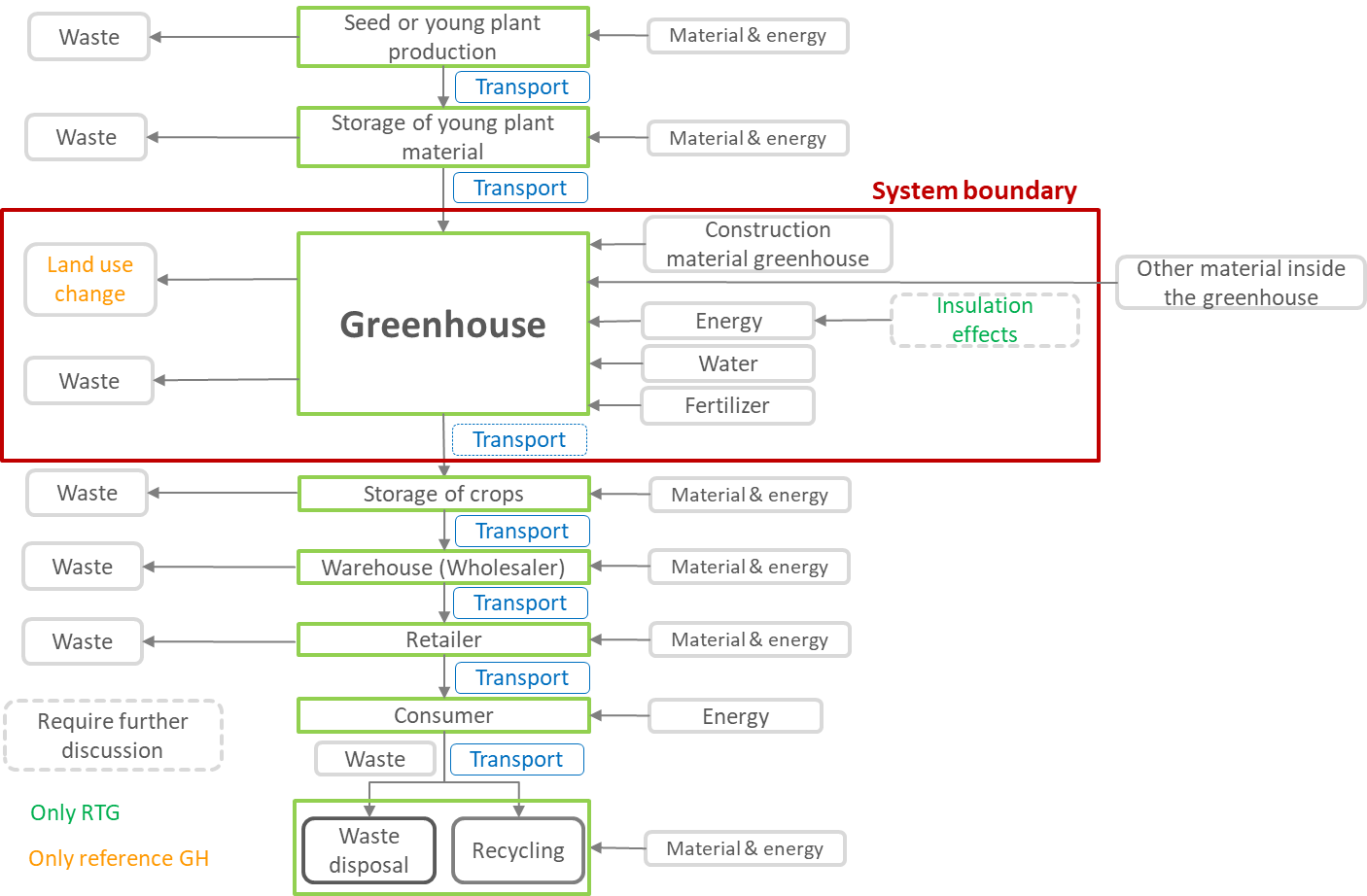The project GROOF aims to reduce Greenhouse Gas (GHG) emissions expressed in CO2e by implementing greenhouses on rooftops for local production of vegetables. The reduction of GHG emissions is expected to result from the synergy effects of building and rooftop greenhouse (RTG), such as recovering heat losses from the building below to heat the RTG, and from reduced transport emissions. The questions are:
- How can we prove the emission saving from the four GROOF pilots?
- And compared to which greenhouse production do we save CO2e emissions?
To answer these questions a review on different methods in the field of environmental assessment has been conducted. Recently, Life Cycle Assessment (LCA) is gaining importance, especially tailored to verify the environmental impact of a certain product or process in regards to different impact categories. Also for the GROOF project this method, especially the Assessment of life cycle greenhouse gas emissions from horticultural products (PAS 2050-1), offers some valuable approaches considering the calculation of the Global Warming Potential (GWP). A full LCA for the horticultural production of the RTGs would start with the seed or young plant (cradle) and end with its final stage of life, when it becomes waste (grave). The whole product life cycle is visible in the following figure.
As the project GROOF sets the focus on the greenhouse rather than the whole life cycle of the plant and vegetable product, the chosen boundary for the GHG emission accounting is the production stage in the greenhouse and the following transport. So why don’t we include the other life stages? The aim of the GHG emission accounting is to analyse in what way GROOF production is different to standard production on the ground. The young plants or the warehouse though are expected not to be different in the GROOF approach or the standard production expect for the transportation, which is the reason why this transport is included.

